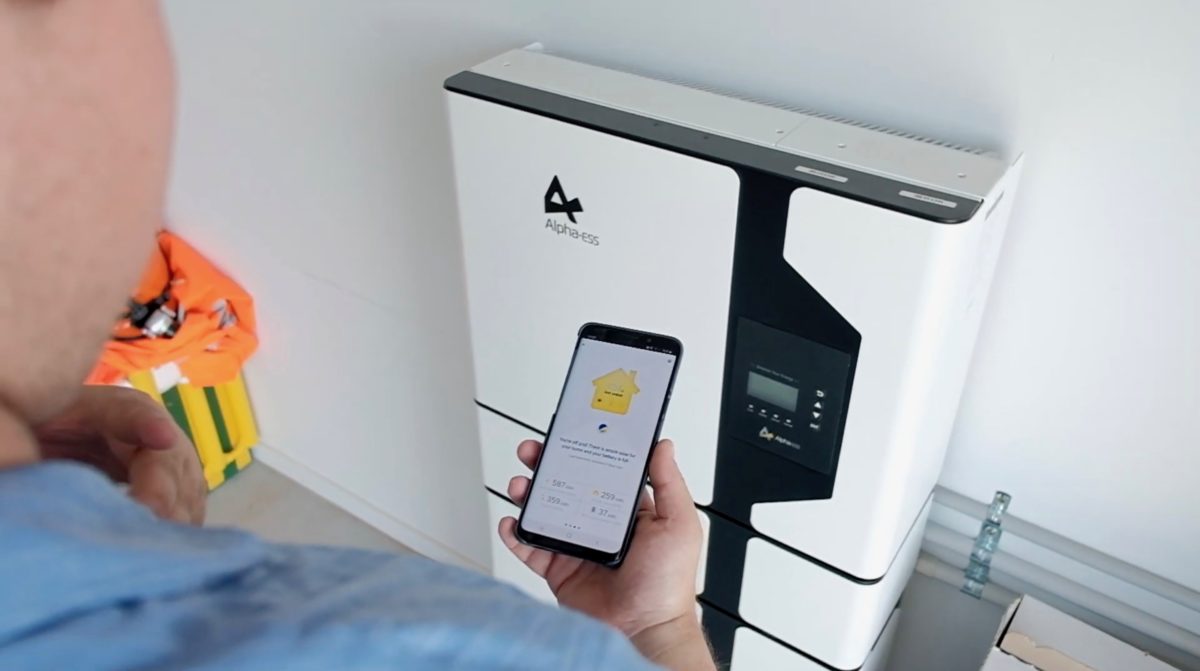Rod Woolley, chairman of the Solar Service Group (Solar SG), is confident that the company's Solar + Battery Members’ Plan, launched this week, will give rise to the world's largest virtual power plant (VPP) by the middle of next year.
Australia already has a massive installed rooftop PV fleet, and installations show no signs of abating, with battery storage systems now being added in increasing numbers. The country seems to present the ideal preconditions for widespread VPP adoption. And while state governments and utilities took the initial lead in driving VPPs, solar installation companies are now pushing the adoption of sophisticated distributed generation networks themselves.
Only last month, AGL Energy expanded its solar battery VPP to the eastern states, as previously it had been primarily focused on South Australia. Projected to have 20,000 participants in less than 12 months, the Solar SG Members’ Plan features intelligent energy management software delivered by clean energy software leader Evergen. Solar SG is using the Sunbank brand to roll out the scheme.
“In effect, what we’re doing is using technology to give consumers market power,” Woolley told pv magazine Australia.
The plan, at its core, is about helping to improve the trading power of solar owners across the National Electricity Market.
Ben Hutt, Evergen’s CEO and managing director, describes its partner, Solar SG, as a “disrupter” in an industry desperately in need of disruption.
“Members’ Plan is kind of a unique proposition at the moment in that it’s the first really open-to-the-public virtual power plant in existence around Australia,” said Hutt.
Both Hutt and Woolley are optimistic that the initiative will drive the mass adoption of batteries in Australia – ultimately fast-tracking the transition to a clean energy system. With almost 2.5 million homes fitted with solar modules and about 70,000 batteries installed, the pair said that Australia is now in a unique position to be at the forefront of the energy system’s evolution.
“I feel like this is the tipping point for batteries becoming really common and widely adopted and it’s partly because of the technology that we’ve got,” said Hutt. “The world is looking at what we’re doing in Australia as being at the leading edge.”
Understandable terminology
Solar SG’s Woolley said the secret to becoming the world’s largest VPP is, ironically, not describing the VPP as the endgame to customers. Rather, the company explains the model in terms that are understandable to ordinary Australians.
“The model we’re talking about is a virtual power plant, but we don’t use that to term with the customers because a VPP is a really difficult thing to explain,” Woolley said. “What we do is simply explain the fact that as an individual you have very little market power, but as one of a pool of individuals, you have a great deal of potential market power.”
By aggregating energy from a fleet of batteries, it becomes possible to open up new sources of revenue to consumers through participation in the spot market and other markets closed off to households. Participation in such markets, in the aggregate, creates an economic incentive for solar and battery storage installations and gives them a way to understand that additional value is available to them. When explained in this way, Woolley said that householders were “jumping” at the opportunity to sign join the VPP.
Solar SG is not confining participation in its Members’ Plan to just its own installation companies Sunbank Solar, Solar Services Group, and SouthAus Solar. Nonetheless, these companies are set to play an important role. With a combined pre-existing customer base of 10,000, there is an existing network to whom the VPP can be offered.
“We’ll be by far the largest VPP in the whole world because we’re starting from an existing customer base,” Woolley said.
New technology
The technology that makes the Members Plan possible has been developed over the last five years by Evergen, in conjunction with the Commonwealth Scientific and Industrial Research Organisation (CSIRO) and backed by AMP Capital.
It uses machine learning algorithms, or AI, to learn a household’s power consumption patterns. It then combines this information with weather forecasts to predict how much energy will be generated by the residential solar system.
“It allows us to basically decide, for that house, how much energy to keep in the battery and how much to sell back into the grid,” Hutt explained. “Instead of dealing with one battery and one home and making decisions based on what’s best for that one home, [Members’ Energy] is aggregating thousands of batteries and then not just having them think about what’s best for my owner and my house, but also how can I operate collaboratively with those other thousand batteries participating in the energy market:”
Unsurprisingly, what goes into these calculations is complex. “There’s actually 42 separate ingredients we use in making a decision every five minutes about what to do with a specific battery in a house,” said Hutt.
While it is virtually impossible to say how much consumers using Evergen technology save, since it is so dependent on the particular household’s consumption patterns, the rule of thumb seems to be roughly 85%. And Hutt said that number is forecast to increase, with some Evergen customers already turning a regular profit from their participation in the VPP.
Entry barriers
The barriers to entry to the Members’ Energy VPP is relatively high. Homeowners need a residential storage system installed – still a significant investment and one made all the more complicated since, as Hutt puts it, not all batteries are created equal. To even begin using the money-saving software, the home needs to have decent storage hardware.
Additional to the financial barrier, homeowner trust in electricity providers is also low.
“Consumers distrust of electricity system is higher than it is of the financial system at the moment,” Hutt said.
He added that Solar SG has invested time and resources in transforming the interactions its companies have with customers, moving them from transactional encounters to ongoing relationships.
While its focus is on the Australian market right now, Woolley said he could envisage transforming the model to Germany and Japan where, Hutt suggested, there is a greater knowledge about renewables.
“There’s plenty of room for this to be big,” Woolley said.
This article was amended on 28/10/2020 to reflect the fact that the Sunbank brand will be used for the VPP program.
This content is protected by copyright and may not be reused. If you want to cooperate with us and would like to reuse some of our content, please contact: editors@pv-magazine.com.




2 comments
By submitting this form you agree to pv magazine using your data for the purposes of publishing your comment.
Your personal data will only be disclosed or otherwise transmitted to third parties for the purposes of spam filtering or if this is necessary for technical maintenance of the website. Any other transfer to third parties will not take place unless this is justified on the basis of applicable data protection regulations or if pv magazine is legally obliged to do so.
You may revoke this consent at any time with effect for the future, in which case your personal data will be deleted immediately. Otherwise, your data will be deleted if pv magazine has processed your request or the purpose of data storage is fulfilled.
Further information on data privacy can be found in our Data Protection Policy.